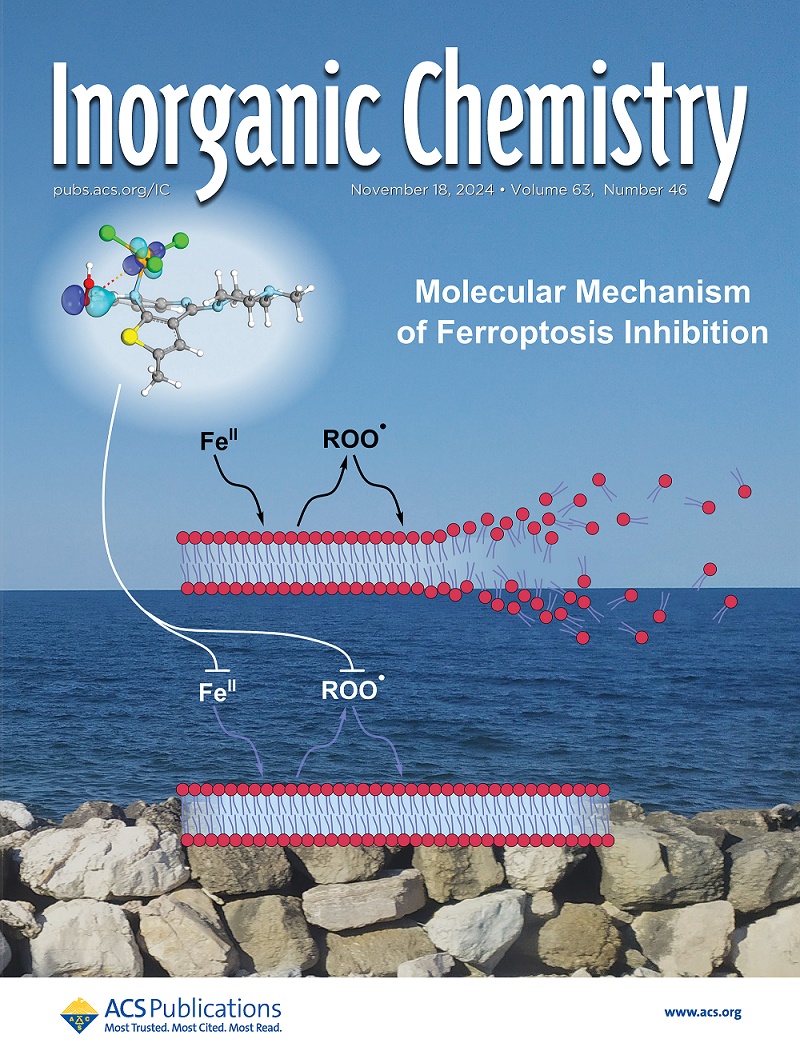Homoleptic Iridium(III) Carbene Complexes with gem-Dimethyl-1,2,4-triazolo[4,3-a]indole Chelates for Blue Organic Light-Emitting Diodes.
IF 4.7
2区 化学
Q1 CHEMISTRY, INORGANIC & NUCLEAR
引用次数: 0
Abstract
Iridium(III) carbene complexes represent the advanced structure of efficient blue phosphorescent emitters to date, yet the refinement of the carbene group is not easy to realize in a large-scale synthesis route. In this study, we develop a series of deep-blue emissive homoleptic Ir(III) carbene complexes bearing the novel gem-dimethyl-1,2,4-triazolo[4,3-a]indole ligand. The carbene ligand can be produced on a large scale without purification by column chromatography, and the cyclometalation can be completed in a high yield without the use of Ag2O. The gem-dimethyl and fused-ring in this unconventional carbene ligand endow Ir(III) complexes with the insensitivity to dopant concentration and high rigidity. The inclusion of a large steric electron-donating tert-butyl group in these phosphors promotes the radiative transition rates and increases their photoluminescence quantum yields (PLQYs). As a result, these complexes exhibit great promise as deep-blue phosphors with the emission maxima at ∼435 nm. We successfully fabricated phosphorescent organic light-emitting diodes (OLEDs) based on these blue emitters, in which a tert-butyl-functionalized mer-Ir(III) phosphor (mer-TzDm-t)-based device achieves a maximum external quantum efficiency (EQE) up to 11.75% and Commission Internationale de I'Eclairage (CIEx,y) coordinates of (0.161, 0.117).蓝色有机发光二极管与宝石-二甲基-1,2,4-三唑[4,3-a]吲哚螯合物的同感铱(III)卡宾配合物
铱(III)卡宾配合物是迄今为止结构先进的高效蓝光磷光发射体,但在大规模合成路线上,卡宾基团的细化并不容易实现。在这项研究中,我们开发了一系列具有新型宝石-二甲基-1,2,4-三唑[4,3-a]吲哚配体的深蓝色发光同感Ir(III)碳配合物。该羰基配体无需柱层析纯化即可大规模生产,无需Ag2O也可高收率完成环金属化反应。这种非常规碳配体中的宝石二甲基和融合环赋予Ir(III)配合物对掺杂浓度不敏感和高刚性。在这些荧光粉中包含一个大的立体给电子叔丁基,促进了辐射跃迁速率,提高了它们的光致发光量子产率(PLQYs)。因此,这些配合物作为发射最大值在~ 435 nm的深蓝色荧光粉具有很大的前景。我们成功地制造了基于这些蓝色发光体的磷光有机发光二极管(oled),其中基于二丁基功能化的mer-Ir(III)荧光粉(mer-TzDm-t)的器件实现了最高的外量子效率(EQE)高达11.75%,国际发光委员会(CIEx,y)坐标为(0.161,0.117)。
本文章由计算机程序翻译,如有差异,请以英文原文为准。
求助全文
约1分钟内获得全文
求助全文
来源期刊

Inorganic Chemistry
化学-无机化学与核化学
CiteScore
7.60
自引率
13.00%
发文量
1960
审稿时长
1.9 months
期刊介绍:
Inorganic Chemistry publishes fundamental studies in all phases of inorganic chemistry. Coverage includes experimental and theoretical reports on quantitative studies of structure and thermodynamics, kinetics, mechanisms of inorganic reactions, bioinorganic chemistry, and relevant aspects of organometallic chemistry, solid-state phenomena, and chemical bonding theory. Emphasis is placed on the synthesis, structure, thermodynamics, reactivity, spectroscopy, and bonding properties of significant new and known compounds.
 求助内容:
求助内容: 应助结果提醒方式:
应助结果提醒方式:


